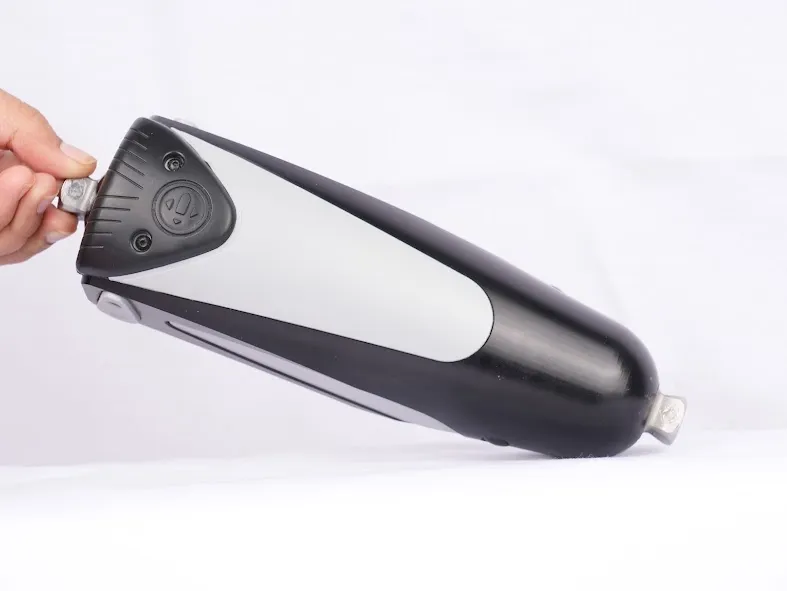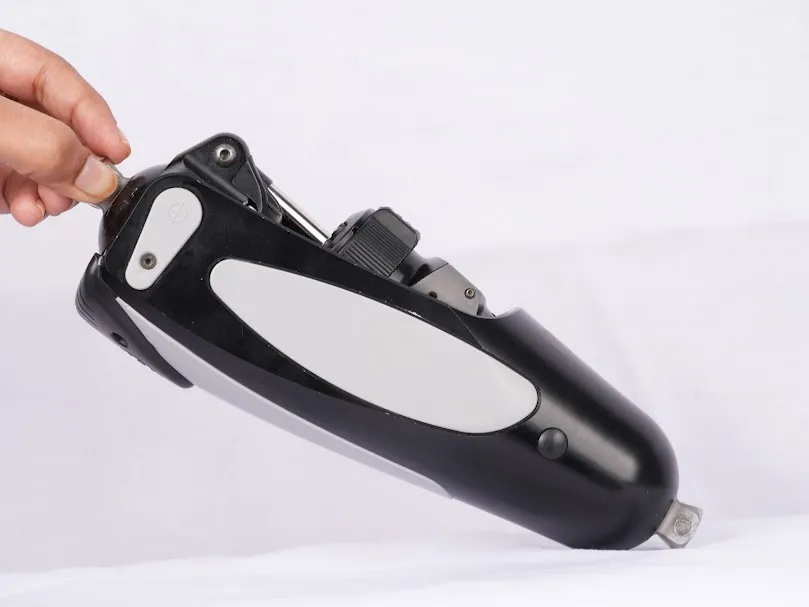
Life After Above Knee Amputation
After the above knee amputation, you may feel hopeless because you cannot do what you have already done. With advanced technology, you can go forward to the next level. Many people adapt prosthetics, finding new ways to stay active and live happy lives. Prosthetic knee joints enable movement with confidence and free-flowing natural motion.
This blog will explain the types of prosthetic knees, their workings, and essential factors when selecting one. Whether for you or those looking to assist a loved one transitioning in life after the amputation, remember that the right choice of limb enables ease in everyday movements.
What are Prosthetic Knee Joints?
The knee joint is one of the most significant joints in the human body. It links the femur to your tibia, allowing you to stand straight, walk, and even balance yourself. The decision to remove this crucial joint due to above-knee amputation, whether from trauma, diabetes, or other medical conditions, can significantly impact a person’s quality of life. Above-knee amputation impacts mobility and functionality, but prosthetic knee joints are a game-changer.
Artificial knee joints come equipped with additional capabilities that allow them to deliver the ability to move and incorporate seamlessly back into everyday activities with the confidence to live your own life. See how these technologies transform problems into possibilities for well-being and meaningful life.
How Does a Prosthetic Knee Work?
A prosthetic knee is an artificial knee joint that replaces the bending and support function of your natural knee after an above-knee amputation. It’s designed to help you walk, stand, and move with stability and comfort.
Some prosthetic knees are mechanical, using hinges, springs, or air/fluid systems to control how the knee bends and straightens. Others are microprocessor-controlled, with tiny sensors and a computer that adjust movement in real time, making it easier to walk on slopes, stairs, or uneven ground.
In simple terms, a prosthetic knee takes over the job of your real knee, giving you balance, control, and confidence in everyday life. With the right fit and proper rehabilitation, it can help you move more naturally and return to the activities you enjoy.
What are the Different Types of Prosthetic Knee Joints in Prosthesis
- Manual locking knee joint: The locking system is stiff and can only be unlocked when a release mechanism is used. It can be more useful in the early stages of rehabilitation to help the user gain more confidence.
- Single-axis knee joint: The most common knee joint works in the single-axis when the knee bends and straightens.
- Polycentric knee joint: It comforts you with multiple axes of rotation or pivot points that allow for more natural movements.
- Pneumatic knee joint: It relies on air to assist in flexing and extending muscles at the knee joint. It has an inner piston, while an outer cylinder accommodates air inside. During the piston stroke, it pumps the air, controls the pressure on the knee, and allows the amputee to walk at different speeds.
- Hydraulic knee joint: This prosthetic knee joints is articulated, and the hydraulic system regulates knee movements. It is an artificial limb that imitates the knee’s functionality. The joint has a piston within a cylinder filled with fluid to stabilize the knee so that it does not swing, and a rubber bumper compresses the stance phase and creates resistance.
- Microprocessor-controlled knee: This type of artificial knee employs a computer to analyze the users’ requirements and consequently coordinate the knee motion to emulate a regular walk. Usually, it recognizes a misstep and increases the knee’s stiffness, allowing you to traverse terrains. You can control these kinds of microprocessor artificial knees in different ways, such as by controlling the swing phase only, the stance phase only, or both the swing and stance phases.
Top Features to Look For in a Prosthetic Knee
- Adjustable flexion and extension: The model is designed for your flexibility requirements.
- Stability mechanisms (stance phase stability): It guarantees stability and helps movement throughout the stance phase.
- Swing phase control: Improves stability and fluidity of the walk during the swing phase.
- Customizable settings for different activities: Innovative and versatile, these settings are suitable for walking, sports, and any other time frame.
Material and Design Considerations of Prosthetic Knee

- Lightweight materials: Extra options like titanium and carbon fiber ensure the comfort and ease of daily use of the above-knee artificial limb.
- Durability and weather resistance: They are designed to withstand demanding and challenging climates and deliver optimum performance in any environment.
- Aesthetic designs: Cosmetically appealing prosthesis that fit specific shapes and sizes perfectly balance form and function for your above-knee artificial leg.
The Importance of Proper Fitting & Alignment
Proper alignment is critical for comfort, stability, and function. A certified prosthetist ensures:
- The knee aligns with your natural gait
- Adjustments are made for height, weight, and stride
- Pain or discomfort is minimized
Fitting Challenges:
- Initial discomfort is normal but should improve quickly
- Fine-tuning may be needed during the first few weeks
Understanding the Biomechanics of Artificial Knee Joints
- Mimicking natural gait: The modern prosthetic knees are designed to approximate the mechanical properties of natural knee joints to facilitate the motion of prosthetic joints.
- Load distribution and stability: Knee joint movement ensures objects are well distributed in contact and gives support and balance during usage.
- Impact on hip and ankle joints: Similarly, in the case of an above-knee prosthetic limb, a knee effectively distributes the load from the hip and the ankle, thereby promoting mobility.
Top 3 Benefits of Using Artificial Knee Joints
- Improved mobility and balance: It makes daily movements easier, including walking and climbing stairs.
- Participation in sports and activities: Facilitates running, cycling, or yoga, and other favorite activities and hobbies can be retained.
- Enhancing confidence and quality of life: It boosts confidence by enabling natural, comfortable movement in social settings, allowing you to engage with others effortlessly and focus on the moment.
Frequently Asked Questions
1. How much does a prosthetic knee joint cost?
The cost of a prosthetic knee joint in India can range from ₹1.5 lakhs to ₹8 lakhs, depending on the type, technology, and manufacturer. The final cost also includes the socket, fitting, alignment, and rehabilitation.
- Mechanical knee joints (basic models) are more affordable and range from ₹1.5 to ₹3 lakhs.
- Microprocessor-controlled knees (MPK) like the Ottobock C-Leg or Össur Rheo Knee are advanced options and can cost between ₹4 lakhs to ₹8 lakhs.
2. How long do prosthetic knee joints last?
A prosthetic knee joint typically lasts 3 to 5 years, depending on the type, usage, and maintenance. Your weight, activity level, and terrain also impact the lifespan.
- Mechanical knees may need replacement or servicing after 3–4 years with regular use.
- Microprocessor knees generally last longer (5–7 years), but may require occasional software updates or battery changes.
Factors like body weight, terrain, and daily usage also affect lifespan. Regular check-ups with your prosthetist help ensure the knee stays in good condition and lasts as long as possible.
3. Can you kneel on a prosthetic knee?
Yes, you can kneel on some prosthetic knees, but it depends on the design and comfort level.
- Many mechanical knees allow kneeling, though padding or a knee cover may make it more comfortable.
- Some microprocessor knees are designed to lock securely when kneeling, making the position stable.
It’s important to learn safe kneeling techniques from your prosthetist to avoid damaging the joint or straining your residual limb. Not every prosthetic model is made for frequent kneeling, so always check with your provider before trying it regularly.
Conclusion: A New Chapter Begins
An above-knee amputation may close one chapter, but it opens another, with the help of modern prosthetics. Whether it’s walking through your neighborhood, going back to work, or playing with your children, prosthetic knee joints empower you to reclaim your life.
With the right choice, proper fitting, and expert guidance, your new prosthetic knee won’t just support your body, it will support your goals.
KARE Prosthetics and Orthotics Solution India
At KARE Prosthetics & Orthotics, we understand what you’re going through. We offer:
- Advanced prosthetic knee systems
- Custom fittings by experienced professionals
- Ongoing care, training, and emotional support
We’re committed to helping you transition with dignity, comfort, and independence.
Visit your nearest KARE center or book a consultation today. Let’s take the next step, together.



